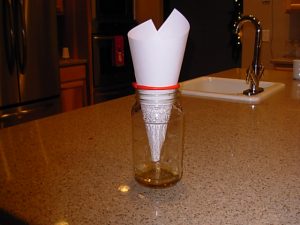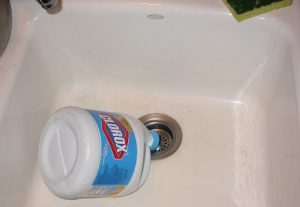6 Gnat Traps for Effective Gnat Control
Gnats can be very annoying pests when they invade your home. They love moisture, open garbage bins, and are attracted to fruits as well, so it’s no surprise that they often infest kitchens. Thankfully, there are simple solutions homeowners can use to get rid of these pesky flies. These include the 6 DIY gnat control methods listed in this article.
-
Vinegar Trap with Mason Jar
Gnats find the scent of apple cider vinegar very attractive. You can also use regular vinegar but be sure to add scents that will make it more appealing, for instance fruit-scented dish washing liquid. Pour the vinegar of choice into a container, preferably a Mason jar. These jars are perfect for DIY projects like

Gnat trap
homemade gnat traps since they are extremely portable and allow you to easily observe the effects of your trap.
After pouring the vinegar in the Mason jar, make holes in the lid then cover the jar. You could also use plastic wrap to cover the jar as well. Just ensure you make small holes in it.
Once you’ve completed these steps, place the jar in an area where the gnats frequent. They’ll enter the jar via the holes on the lid and get trapped in the vinegar solution.
-
Vinegar Trap with Paper Funnel
This vinegar trap is very similar to the traditional gnat trap mentioned prior. However, in this case, instead of covering the container with a lid or plastic wrap punctured with holes, you’ll use a paper funnel.
Fold a sheet of paper into a funnel shape and place it inside the container. Turn funnel down so that the smaller end is in the container – but not touching the vinegar solution – while the wider end is at the top of the container. Ensure the top of the paper funnel touches the opening of the container so there is no place for the gnats to escape. Use the vinegar and dish washing soap solution since the dish washing liquid will make the gnats’ wings get heavy so they are unable to escape.
-
Ammonia or Bleach Solution for Drains
This gnat control method is most effective in cases where homeowners have gnats breeding in their drains. Once the breeding area is not too deep within the drainage system, you’ll be able to effectively kill these pests by pouring ammonia or a bleach solution into the drains.
First, determine whether you will be using ammonia or bleach. Do not mix these agents, as this will cause a toxic fume to envelope your home. If you are using bleach, dilute with water before pouring the substance into your drain. Second, ensure the drain is covered with a stopper for a few hours.
Also, consider using a vinegar and baking soda solution to kill the gnats if you prefer a milder, yet highly effective drain trap.
-
Red Wine Trap
Like the vinegar trap, you’ll need a container and a lid with holes. You’ll also need to add soap to the wine so that the flies will be trapped in a sticky solution. Otherwise, they will be able to fly away and the trap will not perform its function.

Use bleach to kill gnats
When it comes to red wine, any type will do. Pour your wine of choice, as well as a few drops of dish washing liquid into the container then cover with a plastic wrap. Leave solution in an area where the gnats are present and let the solution sit for at least a day. Within a few hours, you’ll see dozens of gnats trapped inside your wine solution!
-
Banana Trap
Much like the other gnat traps mentioned previously, this trap is all about attracting then killing annoying gnats! You can use banana peel or the banana fruit. Place two banana peels or a finely dined banana in a Mason jar. Add other kinds of fruit to the mix if you have any overripe fruit in your kitchen as well. Cover with a piece of plastic wrap that you’ve punctured with small holes.
Let the container sit in your kitchen or any other area where gnats are present. The gnats will naturally be attracted to the scent of the fruit, especially after a few minutes when the scent is properly diffused in the air.
-
Homemade Gnat Spray
A great solution for gnats affecting indoor or outdoor plants is the use of a DIY gnat spray. This spray contains simple ingredients such as fragrant dish washing liquid, for instance, the lemon-scented variety, and water. Spray affected plants with soapy solution. Leave for a few hours to increase the effectiveness of the gnat trap. The gnat spray will kill the flying insects, but be sure to rinse plants afterwards to reduce any risk of damaging the stem, leaves or root.
The gnat traps above are listed to ensure that you have maximum control over your home. You can opt to run with using a single method or put forth a combined effort to get rid of gnats.

No Comments